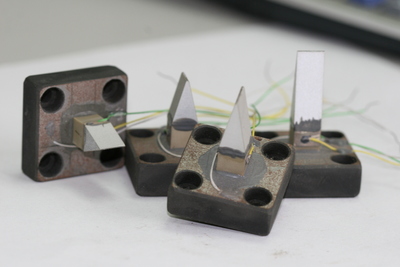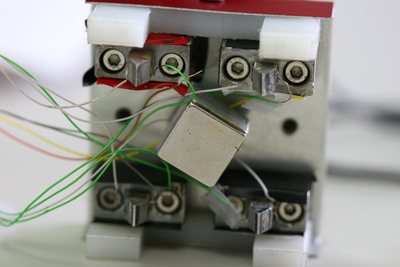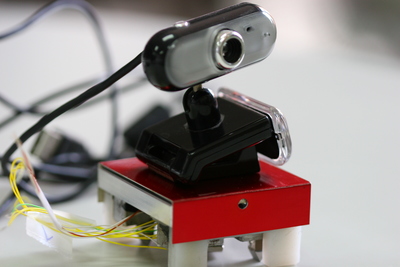NCKU designs mini motor for smart living spaces



Tainan, Taiwan, 27 July 2012
A National Cheng Kung University research team has designed a piezoelectric motor that can be used as wireless sensor and actuator in smart living spaces.
The team is led by Mi-Ching Tsai, General Director of Research and Services Headquarters and Chair Professor of Mechanical Engineering of NCKU in southern Taiwan.
Unveiling the motor recently, Tsai said the design of the motor is revolutionary in its mobility and energy-conservation capability, and the device is not only free-moving on a magnetic platform but easy to be integrated into an active small-size robot.
Compared with traditional electromagnetic motors, the piezoelectric motor can be used in microscopic and high precision applications that calls for features such as low volume, silent to human hearing, and high output torque in low velocity, according to Tsai.
The researcher pointed out that the motor can be installed in electronic devices such as GPS or auto-focus camera for satisfactory performance with no noise and no electromagnetic waves – features that make it an ideal design for quiet and low electromagnetic interference environment.
The main component of the motor is made of piezoelectric material which enables it to move by friction. The friction drive and preloading mechanism design enable it to move individually or in clusters to fit into different disposition or even respond to specific situation, creating flexible and adaptable spaces.
The motor can be made small enough to fit into electronic devices. An example of its application is in LED ceiling lights, according to the researchers.
The motor can move solar-powered LED lights to outdoor areas along a ceiling track, have them recharged, and then move them back inside during the night.
Another special characteristic of the device is that it has the greatest holding force while still achieving good energy-conservation effect.
A National Cheng Kung University research team has designed a piezoelectric motor that can be used as wireless sensor and actuator in smart living spaces.
The team is led by Mi-Ching Tsai, General Director of Research and Services Headquarters and Chair Professor of Mechanical Engineering of NCKU in southern Taiwan.
Unveiling the motor recently, Tsai said the design of the motor is revolutionary in its mobility and energy-conservation capability, and the device is not only free-moving on a magnetic platform but easy to be integrated into an active small-size robot.
Compared with traditional electromagnetic motors, the piezoelectric motor can be used in microscopic and high precision applications that calls for features such as low volume, silent to human hearing, and high output torque in low velocity, according to Tsai.
The researcher pointed out that the motor can be installed in electronic devices such as GPS or auto-focus camera for satisfactory performance with no noise and no electromagnetic waves – features that make it an ideal design for quiet and low electromagnetic interference environment.
The main component of the motor is made of piezoelectric material which enables it to move by friction. The friction drive and preloading mechanism design enable it to move individually or in clusters to fit into different disposition or even respond to specific situation, creating flexible and adaptable spaces.
The motor can be made small enough to fit into electronic devices. An example of its application is in LED ceiling lights, according to the researchers.
The motor can move solar-powered LED lights to outdoor areas along a ceiling track, have them recharged, and then move them back inside during the night.
Another special characteristic of the device is that it has the greatest holding force while still achieving good energy-conservation effect.
Provider:
新聞中心
Date:
101.07.26



